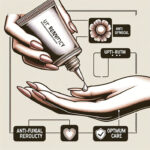What Causes Fingernail Fungus? A Comprehensive Guide

What Causes Fingernail Fungus? A Comprehensive Guide
Introduction to Fingernail Fungus
What is Fingernail Fungus and Why Should You Care?
Have you ever noticed your nails turning a weird color, getting thicker, or even starting to flake? That’s often the pesky work of fingernail fungus—a common yet stubborn condition. This little troublemaker, typically caused by dermatophytes, yeasts, or molds, can really take a toll if left unchecked. Many people shrug off those early signs, but what starts as a minor nuisance can snowball into a persistent infection with even more complications down the line. Today, we’re breaking down what triggers it, what to look out for, and why understanding the root causes is key to nipping it in the bud.
Common Signs and Symptoms of Fingernail Fungus
It usually starts with subtle changes—think yellowing, thickening, or a crumbly nail surface—that you might easily overlook. Sometimes the nail might even take on an odd shape or develop brittle edges, causing discomfort or even a bit of pain when pressure is applied. Occasionally, you might notice a slight odor or some swelling around the nail bed. It’s all too easy to brush off these minor shifts as just part of normal wear and tear, but catching them early can make a world of difference in stopping the progression of the infection.
Why Early Detection Matters
Spotting fingernail fungus in its infancy is a game-changer. Addressing it early on not only boosts the chances of a speedy recovery but also cuts down the overall treatment time. If you catch those initial tweaks in nail appearance and get some professional advice, you can prevent further damage and avoid a more painful, widespread infection. Early intervention is your best defense—it stops the fungus from moving to other nails and keeps nasty complications like pain and bacterial infections at bay.
What Sets Off Fingernail Fungus
How Your Lifestyle and Hygiene Habits Play a Role
Believe it or not, your everyday habits can set the stage for fingernail fungus. Consistently exposing your hands to moist conditions, frequent hand-washing without proper drying, or even using shared nail clippers can inadvertently invite fungal growth. In the hustle and bustle of life, little lapses like these can make all the difference. Keeping up with a solid nail care routine and practicing good personal hygiene—like drying your hands thoroughly—can really help keep these unwanted guests at bay.
The Impact of Environmental Exposures
The places we frequent can also contribute to nail fungus. Think about communal spots like gyms, pools, or public showers—these environments are breeding grounds for fungal spores, making them prime spots for picking up an infection. Even the urban grind, with its polluted air and contaminated surfaces, isn’t far behind in its role. Being cautious in these settings—like sporting a pair of flip-flops in communal areas—can really lower your risk.
How Underlying Health Conditions Can Secretly Increase Your Risk
Sometimes, the problem isn’t just about what you do, but also about your overall health. Conditions like diabetes, psoriasis, or a weakened immune system can make you more prone to fungal invasions. When your body’s defenses are down, it’s like rolling out the red carpet for all sorts of infections. So if you’re managing a chronic condition, extra care with nail hygiene isn’t just a suggestion—it’s a must. Understanding how your health ties into nail vulnerability can help you tailor prevention and treatment strategies more effectively.
How Fingernail Fungus Spreads
The Role of Direct Contact
One of the quickest ways for fingernail fungus to spread is through direct contact. If your infected nail touches someone else’s healthy nail or skin, the fungus can hop over and start causing trouble there too. Ever shared nail clippers or accidentally touched an infected hand? That’s all it takes for an isolated case to snowball into a bigger issue. It’s a great reminder that proper hygiene—especially disinfecting your nail tools—is super important.
The Influence of Public Spaces
Public spaces, particularly those that are humid and heavily used, are notorious for spreading nail fungus. Gyms, spas, and public pools are perfect examples where fungi can easily make the leap from one person to the next. The risk ramps up in the warmer months when humidity is high. By taking a few extra precautions—like wearing your own protective footwear and carrying disinfectant wipes—you can seriously cut down your exposure.
An Inside Look at the Fungus Lifecycle
The life of a fungus is more complex than you might imagine. It all starts when fungal spores settle on a vulnerable nail, latch on, and slowly work their way into the nail bed. As they multiply, they lead to thickening and discoloration of the nail. Understanding this gradual process really drives home why early intervention is so crucial. The longer the fungus is allowed to set up camp, the tougher it becomes to kick it out.
Risk Factors for Fingernail Fungus
Age, Genetics, and Their Sneaky Roles
Did you know that age and genetics can be big players in the nail fungus game? As we get older, our nails tend to lose some of their resilience, making them more susceptible to infection. Plus, some folks are simply more predisposed to fungal growth due to genetic factors. These risks aren't always within our control, so it pays to be extra vigilant—regular check-ups and paying attention to any changes in your nails can help you stay one step ahead.
When Pre-Existing Conditions Raise the Stakes
If you're living with conditions like diabetes or circulation problems, your nails may be more vulnerable. These illnesses can weaken your body’s natural defenses, giving fungi a better chance to settle in. And if you’re on medications that suppress your immune system, the risk only increases. Keeping a careful eye on your nail health and partnering with your doctor for regular checkups can help nip any problems in the bud.
Behavioral and Occupational Hazards
Your daily activities and work environment can also be culprits. Jobs that involve constant exposure to water or harsh chemicals, or even hobbies that require lengthy sessions with your hands in moisture, can weaken your nails’ natural barrier against infection. Whether you’re an athlete, musician, or work in environments that are a bit too damp, protecting your hands with gloves and maintaining top-notch nail care can go a long way in preventing a fungal takeover.
Diagnosing Fingernail Fungus
Catching the Early Signs
The first step in managing fingernail fungus is noticing those subtle early signs. A slight discoloration or a minor change in texture might seem harmless at first, but they’re actually red flags. Many folks mistakenly chalk these changes up to normal aging. However, regular self-checks can be your secret weapon in spotting the problem before it worsens. Jotting down any unusual changes can also help your doctor pinpoint the issue more quickly.
Common Diagnostic Tests
Once a fungal infection is suspected, your doctor might suggest a few tests to confirm the diagnosis. This could involve a simple physical exam, a closer look under a microscope, or even scraping a bit of the nail for a fungal culture. Sometimes, a Wood’s lamp is used to see if the fungus glows under ultraviolet light. These tests aren’t meant to scare you—they’re just tools to help accurately identify what you’re dealing with, so you can get back on track with the right treatment.
When to See a Healthcare Professional
Timing is everything when it comes to nail fungus. If you notice that changes in your nails stick around, or if you start experiencing pain or discomfort, it’s a good idea to consult a healthcare professional. While over-the-counter treatments might work for mild cases, a persistent or severe infection usually calls for a professional’s insight. Early consultation means you can tackle the problem head-on before it has a chance to spread further.
Treatment Options for Fingernail Fungus
Over-the-Counter Solutions
For those first signs of fungal trouble, over-the-counter antifungal creams, ointments, and nail lacquers can be a solid starting point. These remedies aim to halt fungal growth and promote the return of healthy nail tissue. Always remember, patience is key—a complete nail regrowth can often take several weeks or even months. And don’t forget, pairing these products with good nail hygiene practices will improve their effectiveness.
Prescription Medications
If your nail fungus is more stubborn or recurrent, your doctor might suggest prescription options. Medications like terbinafine or itraconazole can help clear the infection from the inside out, and there are also topical solutions tailor-made for tougher cases. Because these treatments can be pretty strong, they’re usually managed under professional supervision to keep an eye on any side effects. While they may take longer to work their magic, they often provide a more definitive solution.
Natural and Integrative Remedies
Alongside conventional treatments, many people are turning to natural remedies for a gentler, supplementary approach. Popular choices include tea tree oil, vinegar soaks, or essential oil blends—all thought to have antifungal properties. Although these remedies might not be a total cure, they can help soothe mild symptoms and support your overall treatment plan. Just be sure to chat with your healthcare provider before mixing natural methods with your prescribed regimen, ensuring you’re on the right track.
Preventing Recurrence of Fingernail Fungus
Smart Hygiene Habits
Keeping fingernail fungus from staging a comeback really boils down to staying on top of your hygiene game. That means disinfecting nail clippers and personal grooming tools, keeping your hands dry, and steering clear of overly damp environments. Don’t forget to clean your footwear and maintain a tidy living space to further reduce the risk of fungal spores invading. A proactive approach to cleanliness can set the stage for healthier nails, free from fungal nuisances.
Lifestyle Tweaks to Keep Fungus at Bay
Sometimes, the small changes you make in your daily routine can have a big impact in preventing nail fungus relapse. Consider investing in breathable footwear, moisture-wicking socks, or even tweaking your diet to give your immune system a boost. Simple habits like properly drying your hands after washing and keeping personal items to yourself can also add an extra layer of defense. By being mindful of your environment and your routines, you really empower yourself to maintain long-term nail health.
Long-Term Strategies for Ongoing Nail Health
Looking after your nails over the long haul means blending professional treatments with consistent home care and smart lifestyle choices. Keep an eye on any changes, schedule regular check-ups, and strictly follow any prescribed treatments. Being aware of your surroundings and potential exposures can also help you make the adjustments needed to protect your nails. In short, a balanced, ongoing effort is your best bet for minimizing the risk of future infections and keeping your nails in top shape.
Conclusion
To sum it all up, fingernail fungus is a tricky condition influenced by a mix of lifestyle habits, environmental exposures, and individual health factors. In this guide, we’ve taken a close look at its origins, how it spreads, and what you can do to spot and treat it early—whether that’s through over-the-counter products, prescription meds, or natural remedies. The key takeaway? Keeping up with good hygiene and making a few smart lifestyle changes really goes a long way in preventing recurrences. Stay informed, be proactive, and team up with healthcare professionals at the first sign of trouble. That’s how you keep your nails looking good and healthy for the long run.





